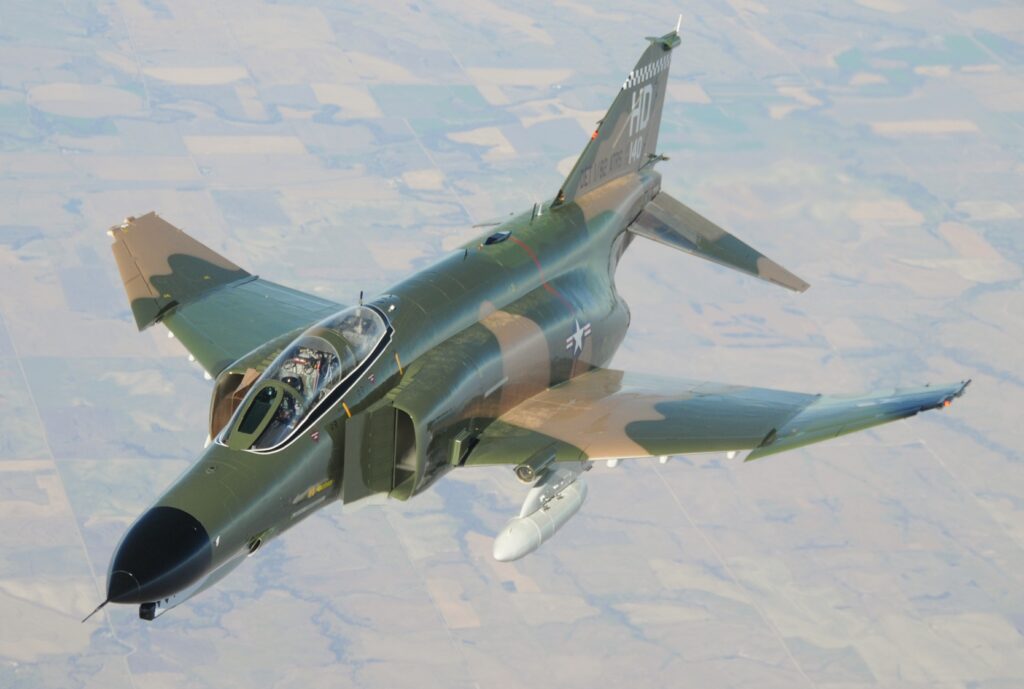The F-18 aircraft has been in service with the United States Navy, Marine Corps, and Air Force variants since 1983 and is still in use today. It was developed as a replacement for the A-7 Corsair and the F-4 Phantom, both of which had limited capabilities in terms of speed and range. The goal of the program was to create a supersonic, single-seat fighter that would be capable of operating from both an aircraft carrier and a land-based airfield.

In the 1970s, the Navy used the A-7 Corsair II for light attack purposes; its role was to carry out attacks against armored vehicles, ships, and ground installations. The Air Force also had the F-4 Phantom II which could also function as a bomber or reconnaissance plane and was primarily used in Vietnam.

The A-7 and F-4 were each deemed inadequate for various reasons, so they needed to be replaced by one plane that could do everything those two planes did.
The aircraft had to be multi-role so that it would be able to conduct air-to-air combat and ground attack missions.
This requirement was extremely demanding and raised many challenges for the designers. However, after 5 years of research and development, the F-18 made its first flight in 1978.
The F-18 Hornet is powered by two General Electric engines which are rated at up to 16,000 pounds of thrust each so it can go quite fast. The F-18 can reach a top speed of 1,190 mph at 36,000 feet. It has a maximum altitude of 50,000 feet and a range of 1,275 miles with two external fuel tanks. The aircraft’s maximum takeoff weight is 50,000 lbs with an empty weight of 28,000 lbs. Its length is 57 feet 4 inches and its wingspan is 44 feet 8 inches.
The F-18 is equipped with folding wings, which can be folded up manually in case of a hydraulic system failure. The wingtip and the flap on each side of the plane have been designed so that they can be folded when the aircraft is on board an aircraft carrier.
The F-18 also features an ejection seat which can work even when the aircraft is traveling at supersonic speeds. The seat is designed to fire at supersonic speeds, with a rocket booster being used to get you away from the plane before deploying a parachute. It doesn’t need an external ejection handle as most other designs do, but instead uses a single grab handle for both pilots and weapon systems officers that are located above their heads.
One interesting aspect of the F-18’s design is its landing gear. Instead of having the wheels retract forward into the fuselage as most other planes do, the F-18’s wheels retract back into the fuselage itself. This allows for more room in the nose for a powerful radar and also gives extra room in front of the engine air intakes.
Because this new landing gear system had never been done before, it was considered a risk during development and testing. If it failed during landing, there would be nothing between you and the ground except your engine air intakes—and those are not made to take a direct hit from Mother Earth. Thankfully, if you lose all hydraulics, there is a mechanical backup system that allows you to manually extend or retract your gears at will.
It is also equipped with an internal 20mm cannon along with various weapons stations capable of carrying up to 16,000 lbs worth of bombs, missiles, or rockets depending on the mission’s needs. This is all possible thanks to a system known as Hardpoint that allows the pilot to configure their F-18 to deal with any situation they may find themselves in while over enemy territory.
In combat situations, pilots have reported achieving up to seven kills per sortie due to the advanced technology built into this aircraft
Nowadays, the Navy’s F-18 aircraft is still being developed. There are numerous small changes made before 2020. We can’t predict what all of these changes will be at this time, but we can be certain that some changes will occur and that the F-18 will, for at least a little while longer, soldier on as one of the most prominent aircraft with the Navy.
In conclusion, the F-18 aircraft today is far more advanced than it was when it was first developed. It has a long life ahead of it, given that upgrades and enhancements will continue, and possibly lead to another generation of the aircraft. However, despite its history and evolving development, whether that is the case or not remains to be seen.

